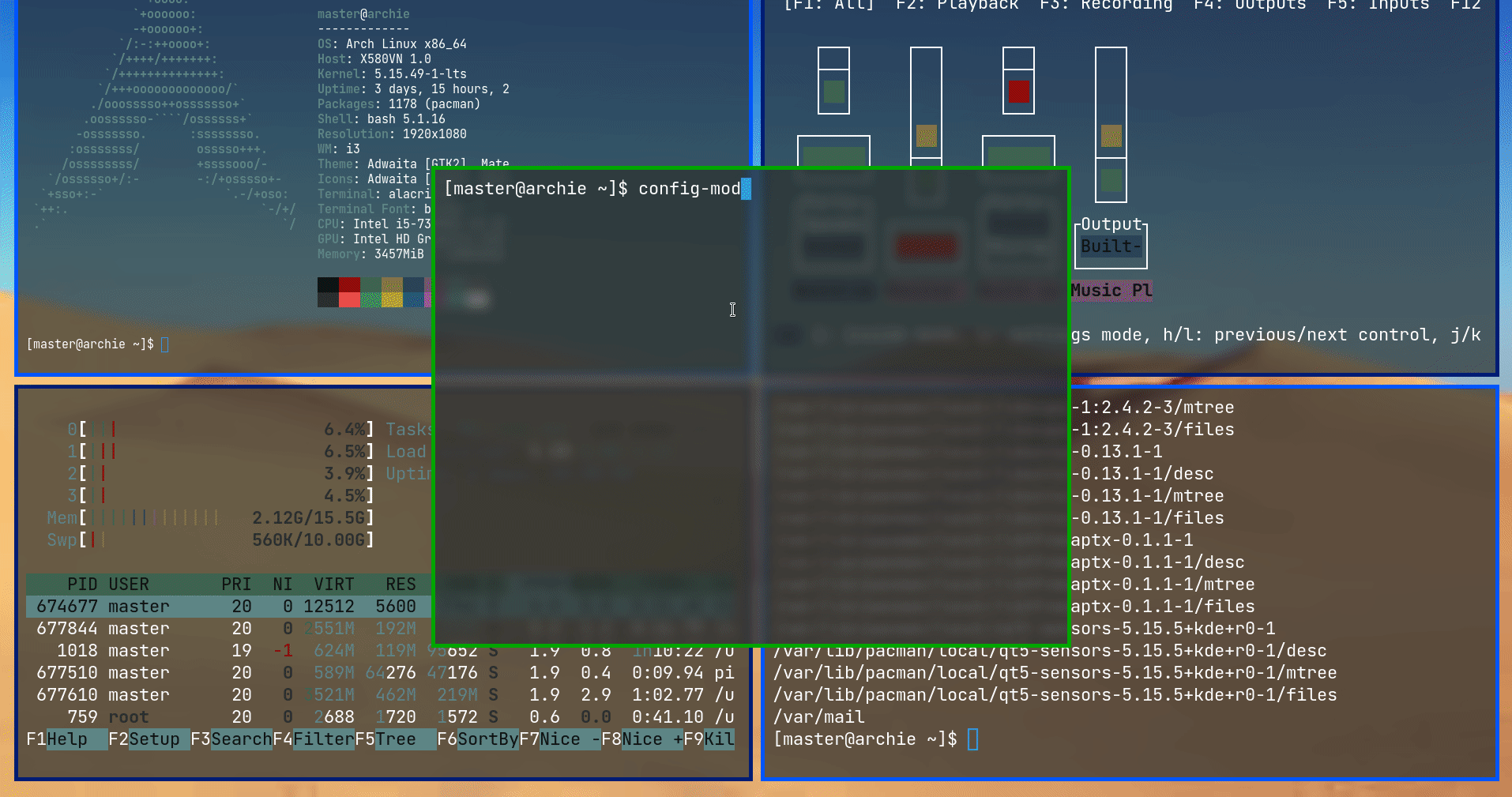config-modules v1.0.0
config-modules
Is turning static config files into dynamic in a modular approach.
What I mean by that?
Take a static i3wm config file. You open it, change a bunch of variables, save it, reload your config and this has changed your color theme. What if you could simply predefine little files (called modules), each containing the same variables holding different colors and then easily switch between those modules, concatenated to your i3wm config? Or even turn whole parts of your config into individual modules that you can apply by choice. This is where config-modules comes into play!
Here's what I used it for: 
How it works
You create a text file (called static). You create a folder containing multiple text files (modules). Later, running this utility will allow you to dynamically (or only via CLI options) choose which module to be concatenated to the static file (to the top/to the bottom of the static file, specified in a special config file called entryconfig) and it will export the resulting concatenated file to a specified place (specified in the same entryconfig). This whooole thing is called an entry. An entry is simply a program you want to generate a config for (from static & modules). You can have multiple entries in the folder that you specified via config-modules-dir slash entries.
A visual example of what I just explained can be seen in ./examples/config-modules-dir.
entry vs module
An entry is a single program that has its own static file, entryconfig and modules directory containing the different modules that can be concatenated to the static and exported on the specified in entryconfig place. All of this is a single entry. It is located under its own directory residing in config-modules-dir slash entries.
config vs entryconfig
The config usually resides in
~/.config/config-modules/config-modules.yaml and it is used to both
set up how config-modules behaves as well as to store cache by the
utility. It is self-explanatory, for info about each option look at
./config.yaml.
Entryconfig on the other hand is a per-entry config file. You use it to configure default entry behavior, the most important of which is where the concatenated static + chosen module should be exported to (export-to property). An example entryconfig file is ./examples/config-modules-dir/entries/i3-wm/entryconfig.yaml, self-explanatory as well.
Installation
$ npm install config-modulesInitialize the config-modules-dir
Look at ./examples/config-modules-dir for the file structure and configuration options you can define in entryconfig.
Initial run
Upon its first run, specify which directory should be used as config-modules-dir, like that:
$ config-modules --config-modules-dir ~/.config-modules-dirIt will as well ask you whether you want it to generate a config file at
~/.config/config-modules/config-modules.yaml. This config file is used
both for storing cache by config-modules and by you, to pass
configuration parameters. Press Y to confirm. The default
self-explanatory config file is available at
./config.yaml.
Note
Both config and entryconfig are self-explanatory, meaning their few parameters are explained with comments in the files. Repeating parameters in entryconfig (if supported) have precedence over the ones defined in the default config.
For more info, see --help.
Contributing
Pull requests are welcome. For major changes, please open an issue first to discuss what you would like to change.
License
3 years ago